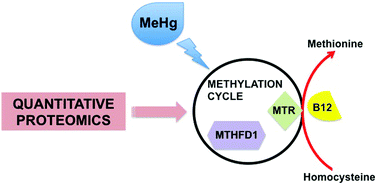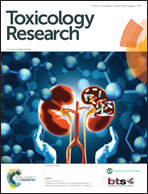A quantitative proteomic approach for unveiling novel mechanisms associated with MeHg-induced toxicity: effects on the methylation cycle
Abstract
Methylmercury (MeHg) is still a major threat for human health and the environment due to its extremely high toxicity that mainly affects the nervous system. Despite the great efforts made during the last few decades, the specific molecular mechanisms involved in MeHg-induced toxicity are still not completely unveiled. In this work we explored such mechanisms using neuroblastoma cells (Neuro-2a) and SILAC as a quantitative proteomic approach. We found that exposure of Neuro-2a cells to 2 mg L−1 MeHg for 8 h decreased the cell viability to 70% and caused significant changes in the morphology of the cells, specially regarding neurite development. Our proteomic results showed different proteins altered upon MeHg exposure that helped to identify pathways related to the toxicity exerted by MeHg. Specifically, we have found that MeHg affects the methylation cycle by inhibiting the expression of key enzymes including MTHFD1 and MTR. Moreover, we demonstrate that inhibition of MTHFD1 is not observed when exposing the cells to inorganic Hg and other heavy metals such as Pb or Cu. Thus, this work sets the stage for dissecting a specific molecular mechanism for MeHg-induced toxicity.


 Please wait while we load your content...
Please wait while we load your content...